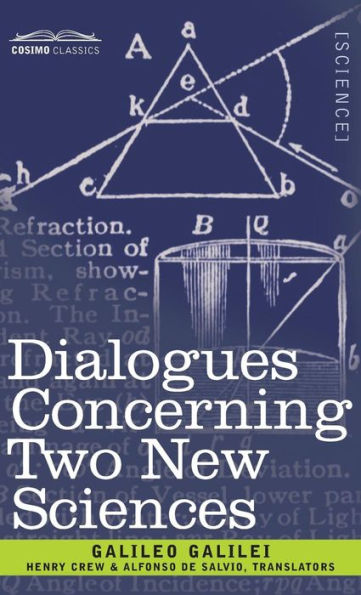GALILEO GALILEI was born in Pisa on February 15, 1564, into a family of impoverished nobility. In 1581 he enrolled at the University of Pisa to study medicine, but later abandoned this for mathematics. Galileo was appointed chair of mathematics at Pisa, and remained in that post until 1591; later he moved to Padua, and finally to Florence.
In marked contrast with the established tradition of science, Galileo relied on experimentation rather than abstract theorizing about the operation of the physical universe. The famous experiment conducted from the top of the leaning tower of Pisa demolished the Aristotelian dictum that objects fall with a velocity equal to their weight. Galileo's avowal of the Copernican theory of the solar system, which set the sun and not the earth at the center, put him at loggerheads with ecclesiastical authority. Galileo was denounced publicly by the clergy and his peers; following the publication of his Dialogue Concerning Two Chief World Systems in 1632, Galileo was brought before the Inquisition for heresy and ordered to recant. The Inquisition subsequently decreed that all copies of the Dialogue be burned and that Galileo be imprisoned for the remainder of his life. The sentence was later commuted to house arrest at Arcetri, outside Florence.
Despite its suppression in Italy, the Dialogue Concerning Two Chief World Systems was translated and disseminated throughout Europe. Galileo likewise became known for his discoveries of new heavenly bodies and refinements of the telescope. His last work, Dialogues Concerning Two New Sciences (1638), completed while under house arrest and smuggled out of Italy, deals with the motion and resistance of bodies. Galileo regarded the Two New Sciences as the best of all his studies. Indeed this work, the result of more than thirty years' experimentation and labor, may stand as the greatest monument to a life devoted to scientific truth and defiant of all strictures on freedom of expression. Galileo died at his villa in Arcetri on January 8, 1642; coincidentally, the year of his death is the year Sir Isaac Newton was born.
Galileo Galilei's other published works include Sidereus Nuncius (Starry Messenger) (1610), on the revolution of heavenly bodies; and Letters on Sunspots (1613).



